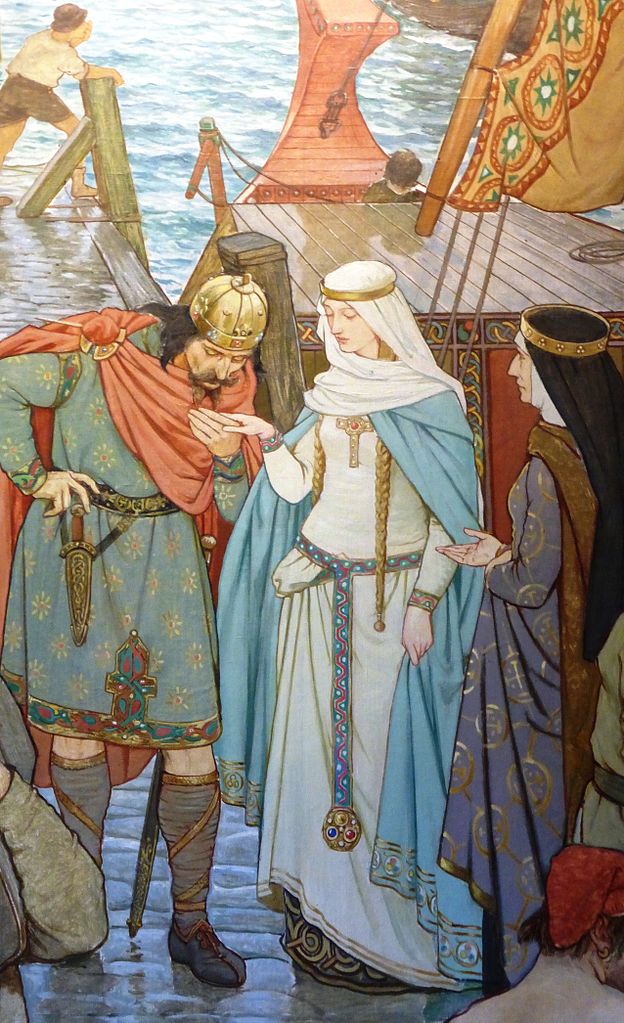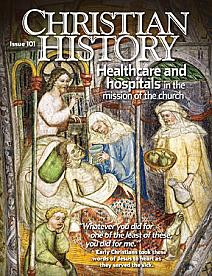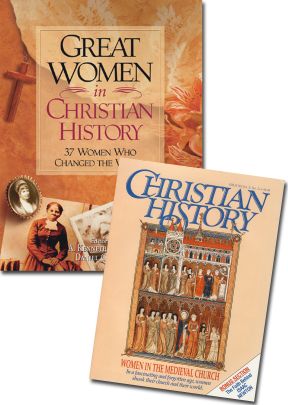QUEEN MARGARET MADE A LASTING IMPACT ON SCOTLAND

[William Hole—Malcolm Greets Margaret (detail from a mural in the Scottish National Portrait Gallery) Kim Traynor / [CC-BY-SA 3.0] Wikimedia File:Malcolm and Margaret at Queensferry.JPG]
HAGIOGRAPHY typically idealized the biographies of medieval saints; so it did with Margaret of Scotland, painting her as almost superhuman in spiritual devotion and piety. As a panegyrist wrote centuries later,
She never sat down at her own table till she had waited upon nine little orphans, and twenty-four poor people. During Advent and Lent, her hospitality included three hundred of them every day. In imitation of her blessed Redeemer, she washed their feet, and gave them alms; and in the hospitals of the sick, she lovingly tended them in the most loathsome diseases. Charity so boundless must often have exhausted its means; she did not hesitate to part with her royal robes, and her jewels; and, more than once, she drained the treasury.
Margaret certainly promoted Christianity in her adopted land. She was faithful in her observance of Christian ritual, funded churches and abbeys, pressed for religious reforms, supported hermits, forged closer ties with Roman Catholicism, and invited English Benedictines to establish monasteries in Scotland. Among the reforms she insisted on was the Roman manner of reckoning Lent. Nonetheless, she also had her feet firmly planted in the secular world.
The granddaughter of Edmund Ironside (who was compelled to divide his kingdom with Canute), she was born in Hungary, where her father, Edward “the exile,” had fought alongside King Andrew I. In 1057, she, her mother, and siblings came to England with Edward, who hoped to be crowned king following the death of Edward the Confessor. But Edward died unexpectedly and Harold became king. The Norman conquest soon followed, after which Margaret’s mother sailed for the continent taking her children Margaret and Edgar with her. Driven by a storm onto the coast of Scotland, they found refuge at the court of King Malcolm III.
Malcolm sought to make Margaret his bride, but tradition says she resisted at first, desiring to enter a convent. However, he prevailed.
His new queen transformed both him and the nation, introducing continental fashions of dress and European courtly ceremonies into Scotland.
She introduced so much state into the royal palace, that not only was it brightened by the many colours of the apparel worn in it, but the whole dwelling blazed with gold and silver; the vessels employed for serving the food and drink to the king and to the nobles of the realm were of gold and silver, or were, at least, gilt and plated.
Foreign merchants found new demands for their wares and the resulting commerce increased Scotland’s ties with the continent.
Her influence on Malcolm was great. Her confessor later wrote, “She made him most attentive to the works of justice, mercy, almsgiving, and other virtues. From her he learnt how to keep the vigils of the night in constant prayer.” She also made it easier for pilgrims to reach St. Andrews by establishing shelters and a ferry (Queensferry) on the Fife.
Malcolm was embroiled in constant contention with England over Northumbria and Cambria. He left Margaret in the fortress at Edinburgh Castle when he went to fight against William Rufus in 1093. She was ailing at the time, wasted from a life of severe fasting. On this day, 16 November 1093, although seriously ill, she attended morning Mass, but overcome by weakness had to be carried back to her room. There she feebly sang Psalm 50, received news that her husband and eldest son had died in battle, and within hours had passed to higher life herself.
The Scots reckoned her a saint and eventually declared her the patron of their nation.
—Dan Graves
----- ----- -----
Margaret was known for her participation in healthcare, a task the church had always engaged in. See Christian History #101, Healthcare and Hospitals in the Mission of the Church
For more about the influence and contributions of Christian women, read Great Women in Christian History







